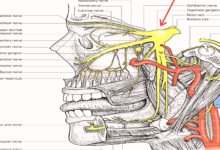
Infiltrative local anesthetics have been utilized for a variety of clinical treatments since the 1943 invention of lidocaine (Xylocaine).
Some common treatments that call for local infiltrative anesthetic include dental procedures as filling or endodontic therapy.laceration repair, skin biopsies, curettage, and digital blocks.
Infiltrative anesthesia is still a go-to for uncomfortable office treatments despite recent developments in topical anaesthetic.
Injection anesthetic contraindications
The use of local injection anesthetics has very few strict contraindications.
Lidocaine allergy is uncommon, and when it does happen, the preservative methylparaben is typically to blame. 1
Using single-dose vials of preservative-free lidocaine is one technique to avoid a potential allergic response.
Since they are chemically distinct and cross-reactions are uncommon, a history of an allergy to an ester anesthetic like procaine (Novocain) is not a contraindication to using lidocaine1.
Strong vasoconstrictor epinephrine should not be used when blood flow in a small area may be compromised.
it has been used in studies where the treated areas are kept warm to prevent further vasoconstriction. 2
Because there is a higher chance of infection while using vasoconstrictors in filthy wounds, the clinician should proceed with caution.
Additionally, epinephrine sensitivity may be increased in some patients with cerebrovascular illness, diabetes, hypertension, heart block, or hypertension.






